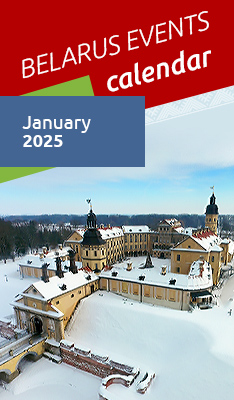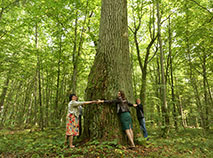Mogilev region

The town hall, Mogilev
The Mogilev region, in the east of the country, is one of the six administrative regions (or oblasts) of Belarus.
The Mogilev region of Belarus borders Russia in the east. Just over half of the region is agricultural land and more than a third is forest.
The people of Mogilev region
-
981,2 thousand people live in the Mogilev region (on 1 January 2024)
-
75.79% of the population live in the towns and cities
-
88.7% of the population are Belarusians
Main religion is Orthodox Christianity, with a total of 17 religions practised in the region
Towns and cities in Mogilev
Mogilev is the main city of the region. There are a further 15 towns, of which two have their own regional administrations.
Transport links in Mogilev
Belarus is an important transit route between Russia and Europe, which means that the Mogilev region has a good road infrastructure.
The major railway lines between the Ukraine, Russia and Poland also cross the region.
The River Dnieper runs through the Mogilev region.
Industry in Mogilev
The Mogilev region is one of the major industrial centres of Belarus. Major industries include:
-
tyres
-
elevators
-
lace
-
electronics and motors
-
rubber footwear
The main industrial centres are in Mogilev and Bobruisk. There are a free economic zone in Mogilev and Mogilev technology park.
Natural resources in Mogilev
The Mogilev region is rich in a range of natural resources and minerals, especially:
-
cement chalk and marl
-
phosphorites
-
clay
-
sand
-
peat
-
mineral waters
Agriculture in Mogilev
More than half of the region is agricultural land. Most of the agriculture is arable, but there is also a significant cattle farming industry, serving the meat, dairy and leather markets.
Around 35% of the territory was contaminated as a result of the Chernobyl nuclear disaster.
Culture and media in Mogilev
The Mogilev region has a rich cultural heritage. Its many attractions include:
-
3 major theatres
-
a philharmonic society
-
25 museums
-
a range of annual music festivals
There are 4 regional and 23 local newspapers published in the region, as well as regional radio and television channels.








 print version
print version make home page
make home page add to bookmarks
add to bookmarks









